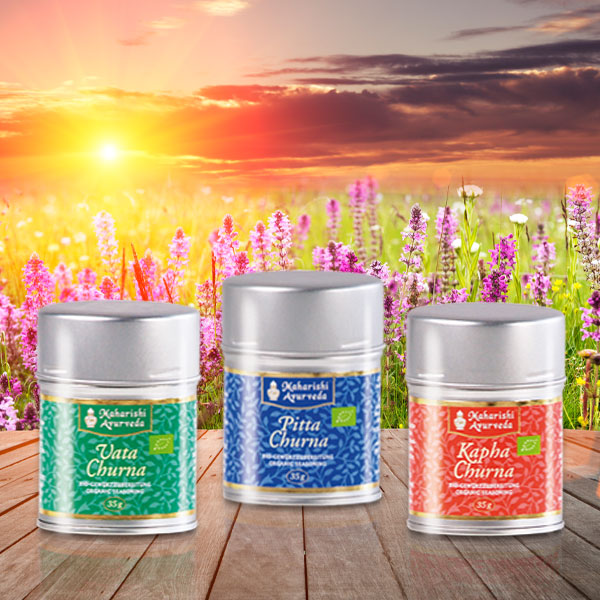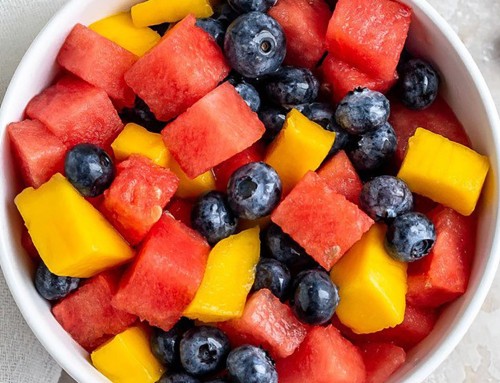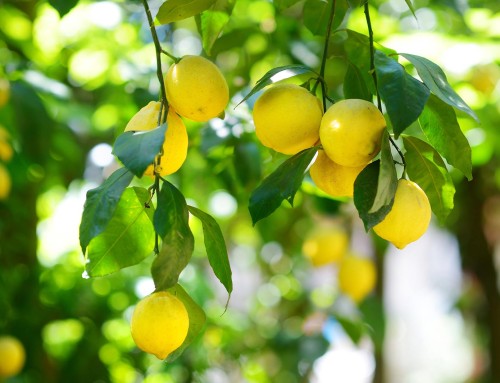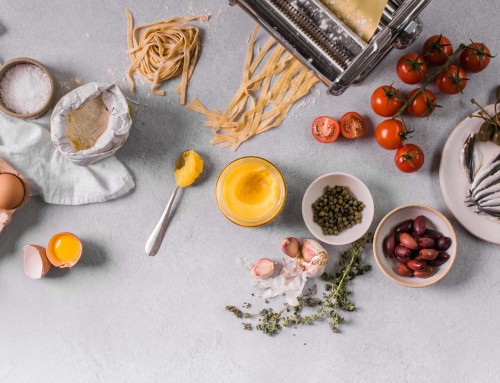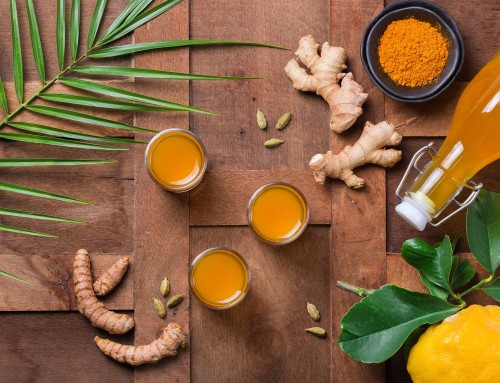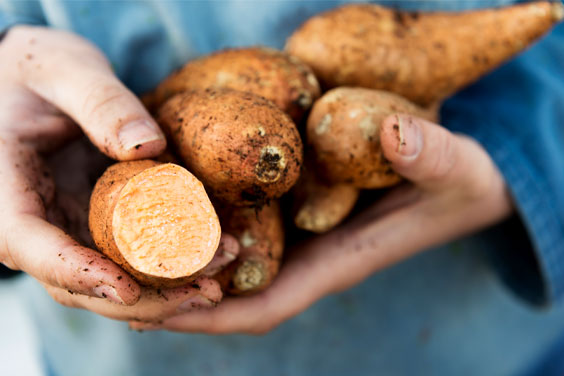
What’s sweet and a complex carbohydrate?
Unique amongst comfort foods the sweet potato also known as Kumara in my homeland New Zealand is a sweet-tasting root vegetable which comes in three varieties, orange, purple or yellow. The humble sweet potato is very versatile and is widely used in many countries, particularly during winter.
A sweet-tasting root vegetable, the sweet potato can be eaten whole or peeled. Belonging to the morning glory family, it is sometimes confused with the white potato which belongs to the nightshade family. You can find the sweet potato in New Zealand as a part of the traditional hangi where root vegetables including kumara are cooked in a pit in the ground.
- Providing a popular alternative to chips.
- In Spain as a cake ingredient.
- Eaten as a snack in Southeast Asia.
- Much loved street food in Cairo.
- As a sweet jelly in South America.
- And in my kitchen baked with the skins on until soft and delectable and finished with ghee, cracked pepper and rock salt.
- Alternatively, mashed with ghee and cinnamon or 1 tsp of Kapha churna and added to dhals especially during winter.
United Kingdom

The sweet potato was brought back from the Americas by Columbus and it is rumoured that Henry VIII Spanish wife, Catherine of Aragon introduced the delights of the sweet potato to his court.
Gerard’s Herball in 1597 said of sweet potato “Howsoever they bee dressed, they comfort, nourish, and strengthen the body”.
Isn’t that so… A hearty casserole containing kumara is both warming, grounding, yet light and easy to digest. The softness of it melts in the mouth and the unexpected sweetness is a delight to the tastebuds. The sweet potato tends to satisfy for long stretches as the sweet potato is a complex carbohydrate and provides a rich source of fibre, vitamins, minerals and is high in beta-carotene. Interestingly the absorption of beta-carotene is enhanced if one drizzles olive oil over the sweet potato prior serving.
What does Ayurveda say?
The humble sweet potato provides a tonic for the spleen, helps to strengthen the liver, satisfies the stomach, is nutritive, supports healthy heart, circulation and eyes and helps to restore the proper functioning of the body, especially after a long winter.
The sweetness of the sweet potato brings balance to Pitta. As it is a root vegetable, it also provides a grounding effect upon Vata dosha. Taken in moderation, it can also be eaten by those with strong Kapha in their nature or by imbalance. When eaten the sweet potato feels light in the stomach and is both nourishing and helpful even when digestion is heavy. As it contains a lot of fibre including the humble sweet potato in your diet helps one maintain regular elimination. It is particularly good to eat during winter and spring.
Make Vata “happy”
Try this tasty and simple mash and see how it makes the Vata qualities within you happy, especially during the winter.

Serves 4
- 2 medium to large sweet potatoes cut into large cubes
- 1 tsp of Vata Aromatic Seasoning
- 1/3 tsp. salt
- 3 Tbsp. ghee
- Water
Method:
Warm the ghee in a pot and stir in 1 tsp of Vata Aromatic Seasoning and salt. As aroma comes up add sweet potatoes and water to 1/4 height of the sweet potatoes. Then cover and simmer until soft. Once soft, remove from the heat and mash with a potato masher or a fork with a little water according to the desired consistency.
Make Pitta “happy”

Serves 4
- 2 medium sweet potatoes, sliced into 2-inch sticks
- 3 Tbsp. olive oil
- 1 tsp of Pitta Mild Seasoning
- 1/3 cup chopped fresh basil
- 1/4 cup chopped fresh parsley
- 1/4 tsp. rock salt
- 1.5 Tbsp. ghee
- Water
Method:
Warm the olive oil in a small pan with 1 tsp of Pitta Mild Seasoning. Add the herbs and stir gently until the aroma comes up. Place the sweet potatoes in a baking dish and pour this mixture over. Fill with water to ¼ of the height of the sweet potatoes and bake at 375F. When a knife goes in easily (about 15 to 20 minutes) they are ready to enjoy! Drizzle a little melted ghee over prior serving.
Make Kapha “happy”

Serves 4
- 2 medium sweet potatoes cut into 1/2 inch cubes
- 2 tsp Kapha Spicy Seasoning
- 1 tsp of grated ginger root
- 5-10 fresh mint leaves chopped
- 2 Tbsp. ghee
- Water
Method:
Warm the ghee in a saucepan and add 2 tsp of Kapha Spicy Seasoning and 1 tsp of grated ginger. Saute until the aroma comes up. Stir in the sweet potatoes, add water to 1/3 the height of the sweet potatoes and cover. Simmer, stirring every few minutes, until a knife goes in easily. (about 10 minutes). Drain and serve with a garnish of fresh mint leaves.
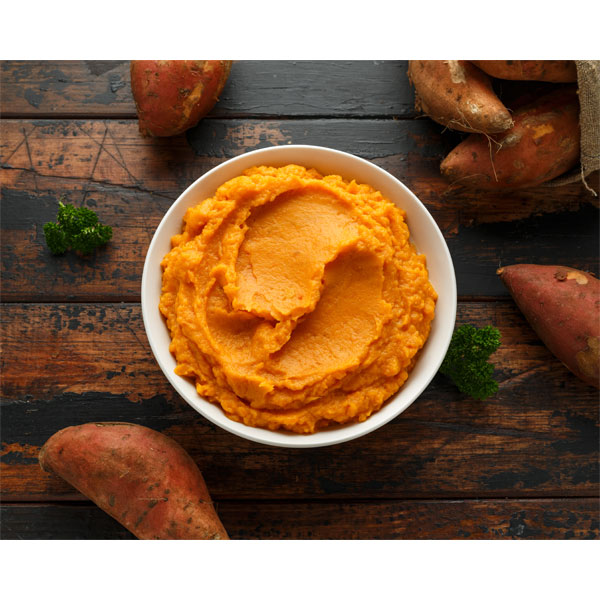
Wishing you the bliss of balance as winter moves to spring

Linda Sinden, Maharishi AyurVeda Consultant
Linda Sinden has been a practising Maharishi Ayurveda Consultant since 1990 and is a regular contributor to our health articles. She has a practice in Auckland, New Zealand and also provides phone or Skype sessions for those who need assistance, but don’t have a consultant in their vicinity.
Email: lindasinden@orbislife.co.nz
Mobile: +64 212237525
Skype: Linda.Sinden
DISCLAIMER: The information in this document is presented for the sole purpose of imparting education on Maharishi AyurVeda and neither the information nor the products are intended to diagnose, treat, mitigate, cure or prevent any disease. If you have a medical condition or are pregnant or lactating, please consult a health professional and it is recommended that you speak with your physician before making significant changes to your diet or routine.

